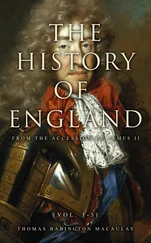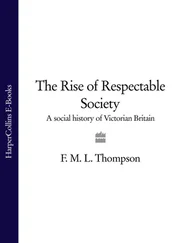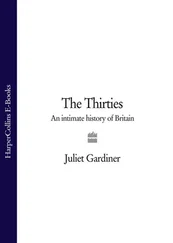Acknowledgements
The ideas and opinions expressed in this book are – even where I believe them to be my own – indebted to a huge number of historians, archaeologists, linguists, numismatists, scientists and others, whose work I have read or with whom I have had the privilege of working, whether as a student, a colleague or a friend. Those people will know who they are, and may well recognize their own fingerprints on my thought-processes. Particular thanks are due to Gareth Williams (no relation), my colleague at the British Museum, and a man to whom I owe a great personal and intellectual debt. Neil Price at the University of Uppsala did me the honour of reading the entire book in draft. His comments have been both hugely encouraging and unerringly pertinent. My editors, Arabella Pike and Peter James, deserve many thanks indeed. Their ministrations – and, in the case of the former, great forbearance – have helped to ensure that the best possible version of this book was ultimately realized. My agents, Julian Alexander and Ben Clarke at LAW, also deserve fulsome thanks for their support and tireless efforts on my behalf. Tom Holland requires a special mention: if it had not been for a good-natured intervention on his part, my introduction to the aforementioned gentlemen would never have been effected, and this book may not have come into being at all.
My father, Geoffrey Williams, read every word of the manuscript as the chapters were produced and watched its slow gestation over many months. My discussions with him, and the innumerable errors identified and improvements suggested, have undoubtedly made this a better book. My mother, Gilli, produced (at exceptionally short notice and with remarkable facility) several of the fabulous line drawings in this book. For all of the help that both my parents have provided, as well as their unwavering love and support, my gratitude is profound.
And finally my wife, Zeena, has had to contend with an intrusive Viking presence in her life for longer now than she probably ever imagined. But she has weathered the storm and borne me up whenever I felt that I might sink. Nothing would have been possible without her. She is the best.
I cannot stress enough, however, that none of the people I have mentioned above can in any way be held responsible for my wilder flights of imagination, or for any errors that have made it into print: these are all my own.
A Note on Names
There is a bewildering amount of variation in the rendering of personal names across this period, with the same name frequently appearing in wildly different spellings depending on the language of the written source in which it appears. As a rule of thumb, I have preferred to use the most contemporary and ethno-linguistically appropriate versions wherever possible. I have, however, made frequent exception wherever normalized modern spellings of names are likely to be more familiar to the reader: hence ‘Olaf’, rather than Oláfr ; ‘Eric’, rather than Eiríkr ; ‘Odin’, rather than Oðinn . Where variant forms are used (especially in quotations), I have provided the more familiar form in square brackets. Given the complexities and ambiguities of Viking Age onomastics, it is entirely likely that some inconsistencies remain: my apologies in advance if this is so.
In the text and Notes, ‘ON’ denotes Old Norse, ‘OE’ Old English and ‘ModE’ Modern English.
1
Outsiders from Across the Water
When the watchman on the wall, the Shieldings’ lookout
whose job it was to guard the sea-cliffs,
saw shields glittering on the gangplank
and battle-equipment being unloaded
he had to find out who and what they were. So he rode to the shore,
this horseman of Hrothgar’s, and challenged them
in formal terms, flourishing his spear.
Beowulf 1
In the days of King Beorhtric of Wessex (r. 786–802), ‘there came for the first time three ships of Northmen from Hordaland’,2 and ‘they landed in the island which is called Portland’.3 ‘[T]he king’s reeve, who was then in the town called Dorchester, leapt on his horse, sped to the harbour with a few men (for he thought they were merchants rather than marauders), and admonishing them [the Northmen] in an authoritative manner, gave orders that they should be driven to the royal town. And he and his companions were killed by them on the spot. The name of the reeve was Beaduheard.’4
‘Those were the first ships of Danish men which came to the land of the English.’5
Looking south from the summit of the barrow, the land feels like it is slipping away, yielding itself to the ineffable splendour of the ocean. Away in the distance the dark bulk of Portland languishes, a last defiant redoubt set in the glittering sea. The world is wide here, the coast of England laid out in broad wings to east and west; on a bright clear day – the ozone hollowing out the sinuses – you feel weightless, as if you could step from the top of that mound and be lifted into the firmament, soar into that white light obliterating the edges of land, sea and sky, tumbling in the breeze.
The mound is known, for reasons now lost, as Culliford Tree. It is a tumulus, a Bronze Age burial mound – one of five running east to west – that had stood on the Dorset chalk for more than 2,000 years before it received a name in the English tongue. Like breakwaters in the surf, the mounds and their ancient dead have endured the battering tides of time, forcing history to shape itself around them. At some point after it was named, the barrow became the meeting place of Culliford Tree Hundred, the administrative district of which Portland formed part at the time of the Domesday Survey in 1086. It had probably served this purpose for hundreds of years prior to William the Conqueror’s great national audit and by the end of the eighth century it was almost certainly a significant regional meeting place. It was in this place and in others like it that royal officials enacted the king’s will and delivered his justice, adjudicating disputes and pronouncing verdicts which could include fines, mutilation and death. From the summit of the barrow, the landscape reveals itself to the watcher – a place from which the land could be claimed, authority enacted in the act of seeing.
On that day at the end of the eighth century when three ships came unasked to Portland, the man riding down to Portland strand might well have paused and looked back over his shoulder, looked for Culliford Tree. He might have sought comfort from the distant mound on the horizon – a dark beacon of antiquity and earth-fast custom, a symbol of territory and authority, of land and legitimacy. This man, Beaduheard, would have known that the barrow watched over him, lending him the power in the land, confirming the prerogatives of his office. He was reeve to the king of Wessex, Beorhtric, and as such he exercised the king’s delegated authority. Reeves represented the king in towns, ports and sometimes across whole shires; the modern and medieval word ‘sheriff’ has its origin in these ‘shire-reeves’. Beaduheard, therefore, was an important man – responsible, perhaps, for local government in Dorchester and the surrounding countryside, a man used to getting his own way.
Beaduheard arrives on Portland to find a group of travellers arrayed on the beach, their ships drawn up behind them, their backs to the sea. They are wary – frightened even. They are strangers in a strange land, conditioned perhaps to expect a frosty welcome. Beaduheard dismounts from his horse to receive them, others following his lead, shingle crunching beneath leather-shod feet. Words are exchanged but their meaning is lost – whatever mutual words they understood failing in the tension of the moment, drowned by the crashing of the waves. But Beaduheard is no diplomat, and the tenor of his words is clear enough. He ‘admonishes’ the newcomers in an ‘authoritative manner’, he attempts to ‘drive them’ to the king’s residence (‘against their will’ as the chronicle of John of Worcester adds).6 He knows his duty, and he knows the law.
Читать дальше












